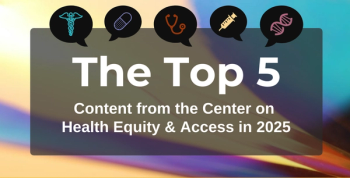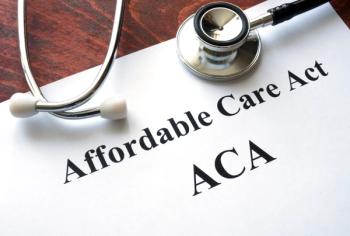
Future of Health Record Banking in Hospital Referral Regions
Health record banks offer a promising future for health records and secure information exchange.
The health record bank offers a promising future for health records, in a secure system. The establishment of health record bank in hospital referral regions is crucial for open health data exchange. A health record bank is exactly what it sounds like—a bank for all patient medical records. A health record bank is similar to a bank where accountholders deposit money, in the sense that it is a place where participating providers deposite health records electronically into accounts for patients residing in the local community/area. Essentially, a health record bank coordinates health transactions, rather than financial transactions, and the patient is the key/ATM card.
In a health record bank, an individual has control over his or her medical record privacy. Coordination improves between all the providers, clinics, hospitals, and insurance plans. Currently, if a patient sought services from several healthcare organizations, the patient is burdened with the responsibility of transferring medical records.
With a health record bank, patient records from all providers are seamlessly entered into a single record so that patient care from all providers is available at one location in a snapshot; patient record exchange is enhanced, and hospital readmissions and errors are reduced. The health record bank is a solution to many of the problems with current electronic medical records. It controls privacy, as individual patients are in charge of their privacy policy. The patient determines which provider records will be deposited into the account and which individuals can view records. The health record bank uses an extensive privacy level for patient records. A health record bank eases transition from paper records, and facilitates interoperability—it synchronizes with other electronic medical records.
The health record bank system is technologically advanced, and similar to an electronic medical record system at a local hospital, but on a wider scale. The health record bank has 3 windows: withdrawal, deposit, and search. The withdrawal window is where providers and others, as authorized by the patient/accountholder, extract patient records. The deposit window is where new patient records are submitted back to the bank. The search window can be used, with patient permission, by government agencies and healthcare organizations for audits and patient outcome benchmarks. The health record bank features a secure login page and documents every time and each person who accessed each record. Each record is HL7 encrypted, while the bank itself will be encrypted by Hyper Text Transfer Protocol with Secure Sockets Layer. Extensive measures are taken against unauthorized access and hackers, akin to electronic medical record systems.
Following meaningful use criteria, each patient would be provided with his or her problem list, allergies, medications, procedures, and discharge notes, similar to the Spokane, Washington, health record bank.1 The system would feature medication error, drug interference, preventive measures, and reminder appointments alerts. Discharge notes empower and engage the patient in discharge activities and alerts, while providing a written synopsis of discharge instructions in the language of choice; a care manager/coach is assigned for a plan of care. The health record bank would recruit patients from hospitals within managed care organizations, Medicaid- and Medicare-reimbursed hospitals, and community clinics. The Healthcare Information Technology Standards codes would be extracted from organizations that have an electronic medical record set up already to ease interoperability with the new interface. There would be a tracking system for patient consent, patient ID, and patient health record bank ID. All patients would have access to their own electronic personal health record.
Health record banking has been shown to be financially sustainable, at every level.2 Health record banks potentially reduce redundant medical procedures and costs, and improve patient safety. Using a countywide, community-based, or hospital referral region-based approach is more efficient, than jumping into a centralized state-based health record bank approach. With a statewide approach, majority of patient health information is not effectively used; as it is unlikely that a patient from County A will routinely seek care from a distant County B, other than a rare emergency visit. A statewide health record bank increases costs, and voids the purpose of a health record bank. The patient’s accounts, the inputs (patient health information), and its governance needs to be effective.
With a statewide approach, successful encouragement of patient and providers to use the system is difficult to track, coordinate, and the bank will be likely left alone and unused. A centralized system needs all providers to agree to share data, which is a difficult task; distributed, decentralized models work better due to collaboration.2 The creation of a pilot hospital referral region health record bank will be more synchronized, as it becomes necessary for hospitals in each market to coordinate data; health plans can provide regional incentives. It is easier to implement and coordinate across regional healthcare markets. The bank will have better contact with providers and patients, and the counties/region will be in charge of the bank itself.
Continuing with decentralized health record banks almost follows in the footsteps of California, Colorado, Washington State, and Harvard.2,3,1 Although Arizona,4 South Carolina, Arkansas, and Georgia2 have successful implementation of statewide health record banks, at this initial stage of health record bank implementation, decentralized styles for hospital referral regions are the most efficient manner of setting up systems.
While the next step would be to connect these decentralized health record banks to a centralized bank, it is imperative to fill in the gaps of data sharing and health outcomes now, without time to waste. The time spent creating a centralized health record bank becomes an opportunity cost when health outcomes and medical errors are at stake; there are too many gaps to fill in between the time it takes for statewide implementation. The use of a hospital referral region based bank provides incentives for managed care organizations and payers to share data, as well as stakeholder presentation. Health plans who become involved and establish health record banks, such as Cal INDEX,2 are reaping the health outcome benefits and cost savings from beneficiaries who opt in to shared health data infuriation between in network providers.
Healthcare is an unpredictable market; since the key for managed care organization is “managing risk,” health record banks are crucial for disease management of chronic disease patients. Medicaid and dual eligible managed care plans are already economically incentivized towards the benefits of health record banks, as these beneficiaries are usually the sickest and poorest of patient populations.2,3 Health record banks prevent duplication of services, common in dual eligibles.2,6,7 The asymmetric information created by lack of data sharing and interoperability creates an environment prone to adverse effects for patients,2 as well as reduced patient empowerment and quality of care.
Health records are in a constant flux, from privacy acts, state laws, healthcare reform, and the obvious provider encounters. Legal restrictions for privacy will apply to the health record bank; it is easier to apply state restrictions on health privacy and the Health Information Portability and Accountability Act at a county level.
A statewide effort will take too long for planning, let alone implementation. When the community is in control of the process, the patient will support and facilitate implementation. Essentially, connectivity will reduce errors, and increase quality. With statewide effort, inefficiencies in coordination between providers may arise, affecting population health outcomes and increasing chance of medical errors. A statewide effort towards health record banking is cost ineffective and fails to facilitate a better experience for the users of the health record bank. Statewide efforts for health record banks face are economically unfeasible, and often lack the funding sustainability.8,2 A health record bank can be tailored to the location, demographics, and epidemiology of diseases in the area, easing updates. The bank can adjust its patient reminders to disease prevalent in each county or hospital referral region.
Finally, rather than outsource a customized platform to an information technology (IT) vendor, the health record bank can adapt an existing platform. This saves the cost of building a system from scratch, and prevents the health record bank from being considered as just an IT project. The establishment of a health record bank is more than just another IT project; a health record bank needs financing, government, patient support and stakeholder cooperation, and sustainability, not just the IT infrastructure. These capabilities can be better established at the across-county levels/hospital referral regions.
The current use of health record banks are the latest trend in health IT. Current practices can be easily adapted towards decentralized health record banks in hospital referral regions. With a health record bank in each hospital referral region, there will be increased cost savings and quality. A hospital referral region based health record bank should adapt best practices from other pilot decentralized health record banks. In our already burdened health care arena, healthcare banking in hospital referral regions is exactly what we need.
Coordinated health record transactions are coming to a bank near you!
___________________________________________________________________
References
- Dimick C. Taking Medical Records to the Bank. Journal of AHIMA. 2008:79,5: 24-29.
- Kendall D and Quill E. A Lifetime Electronic Health Record for Every American. http://www.thirdway.org/report/a-lifetime-electronic-health-record-for-every-american. Published Published May 28, 2015. Accessed July 31, 2016.
- Yassnoff W. Why Harvard's Health Record Bank could be a turning point. http://www.healthcareitnews.com/news/why-harvards-health-record-bank-could-be-turning-point. Published April 20, 2012. Access July 31, 2016.
- eHealthtrust. eHealthtrust Arizona. http://www.ehealthtrust.com/. Accessed July 31, 2016.
- Kaiser Family Foundation. Medicaid’s Role for Dual Eligible Beneficiaries. Retrieved from https://kaiserfamilyfoundation.files.wordpress.com/2013/08/7846-04-medicaids-role-for-dual-eligible-beneficiaries.pdf. Accessed July 31, 2016.
- Libersky, J, Dodd, A., & Verghese S. National and state trends in enrollment and spending for dual eligibles under age 65 in Medicaid managed care. Disability and health journal. 2013;6(2), 87-94. doi: 10.1016/j.dhjo.2012.11.004
- Meyer, H. The Coming Experiments In Integrating And Coordinating Care For 'Dual Eligibles'. Health Affairs. 2012;31(6), 1151-1155. doi: 10.1377/hlthaff.2012.0505
- Dullabh P, et al.. Evaluation of the State Health Information Exchange Cooperative Agreement Program: Early Findings from a Review of Twenty-Seven States,” National Opinion Research Center at the University of Chicago. http://www.healthit.gov/sites/default/files/pdf/state-health-info-exchange-coop-program-evaluation.pdf. Accessed June, 2016.
Newsletter
Stay ahead of policy, cost, and value—subscribe to AJMC for expert insights at the intersection of clinical care and health economics.








































